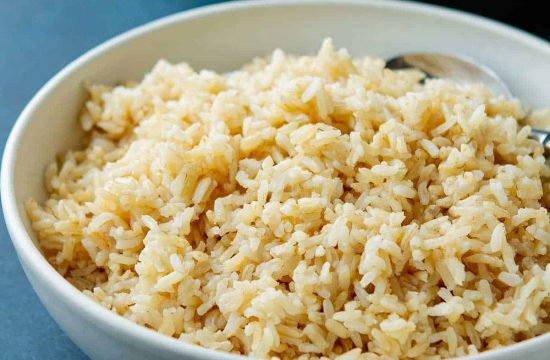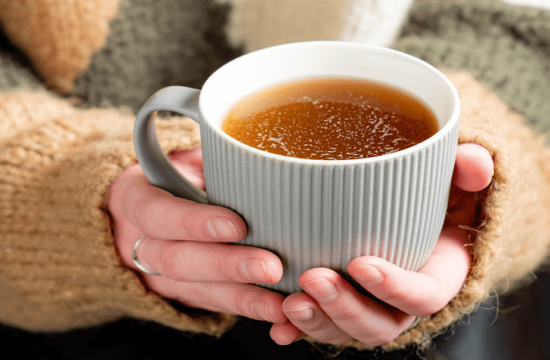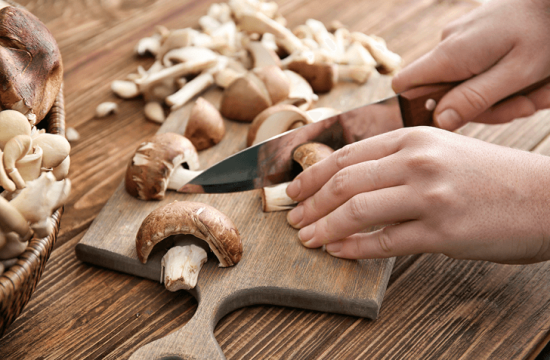Article by Dr Raghuram Y.S. MD (Ay) & Dr Manasa. S, B.A.M.S
Cluster Headache
This is a type of headache which occurs in groups or clusters and hence the name ‘cluster headache’. It is marked by unilateral headache along with burning, sharp and stabbing type of sensation felt in the head. Pain may be felt in one of the regions including behind or near the eyes, eye brows, forehead, temples or behind the ear. The episodes may last from 15 minutes to 3 hours. They can also occur daily or almost daily for many weeks and months. Between the episodes of pain, there is a pain free time which might last for at least 1 month or more. Chronic cluster headaches are those wherein a cluster period perseveres for at least one year uninterrupted.
Related Reading – ‘Cluster Headache – meaning, symptoms, prevention, treatment, Ayurveda Understanding’
Cluster Headache: Ayurveda Understanding
Though we cannot exactly compare any one particular condition explained in Ayurveda treatises with cluster headache, the below explained are some of the conditions which closely resemble with cluster headache in their clinical presentation.
Vataja Shiroroga / Shirashula – Based on the presentation, that cluster headache comes in clusters or groups and has periods of complete remissions, the nature of headache appears totally unpredictable. Unpredictability is the nature of vata. Therefore, it may be included under Vataja Shiroroga – a type of headache predominantly caused by aggravated vata. The nature of headache is also of sharp and stabbing type. These types of pain are caused by aggravated vata. When there is associated burning sensation in the head, as found in some cases of cluster headaches, pitta association can be considered.
In the description of cluster headache, it is said – ‘Cluster headache is so fast in occurrence that chronic sufferers don’t get enough time to be prepared for the episode’. This sudden appearance and disappearance for long periods and then coming back in an unpredictable way and time are characteristics of vata behaviour in a disease.
Related Reading – Vataja Shiroroga
Ardhavabhedaka – On the other hand, some people have one sided headache along with tearing of eyes. This points towards cluster headache presenting like ‘ardhavabhedaka’. Ardhavabhedaka is one of the types of headaches wherein there is pain in half side of the head and body. Ardhavabhedaka is often compared to migraine headache. Cluster Headache is also seen to have overlap symptoms of migraine headache. Migranious Neuralgia is also a synonym of cluster headache.
Related Reading – Ardhavabhedaka
From perspective of symptoms
Unilateral headache – with pain located behind or above eyes, temples, forehead or behind the head – pointing towards ardhavabhedaka and also vataja shirashula. These symptoms are seen in both types of these headaches.
Switching headache – In spite of being one sided headache in most cases, cluster headache also switches locations during the attack. Switching over locations – sometime here and sometimes there and of unpredictable nature is found in vataja types of headaches.
Eye pain – Pain around eye, mainly one eye which later spreads across the forehead, above the brows to the level of ears is a common feature of cluster headache. This pain may also spread to face, head and neck. Such pain is found in vataja shiroroga, ardhavabhedaka and also in an eye condition named adhimantha – often correlated with glaucoma. Cluster headache resembles vataja type of adhimantha in its presentation.
Other symptoms of cluster headache and dosha relationship
Teary eyes, drooping of eyelid and restlessness are predominantly due to vata aggravation while redness of the eyes, flushing, sweating are indicative of pitta involvement. In mixed proportions they are part and parcel of the headaches already discussed i.e. vataja shiroroga and ardhavabhedaka.
Swelling of forehead or face may be caused by vata but also is indicative of kapha involvement.
Stuffy or running nose in cluster headache is due to involvement of kapha along with vata.
Cluster Periods – indicate vata pattern of pains
Cluster periods is a manifestation of cluster headache which typically extends over a span of weeks to months demonstrating a remarkable consistency in terms of their onset and duration. The episodes recur and have a pattern. Episodes of cluster headache or cluster period varies in terms of persistence and remission days which may range from few days to months to years in either case. When a cluster period stays for one year almost uninterrupted, it will be called as chronic cluster headache. Though the headache sticks to a vata pattern of presentation, the long standing and chronic cases with varied periods of existence and remission and recurrence cycles, with pitta and kapha association shall be looked into as ‘Sannipataja Shiroroga’ i.e. headache caused by and having symptoms of all three doshas simultaneously, with predominance of vata in the sannipata i.e. vata pradhana sannipataja shiroroga or shirashula.
During cluster period it is said that – ‘the pain tends to terminate as abruptly as it initiates, leaving individuals mostly pain-free but understandably fatigued in the aftermath’. This pattern is clearly a ‘vata pattern’ and hence fits into ‘vataja shirashula / shiroroga’ category of headaches.
From the perspective of triggers of cluster headache
Trekking, air travel and exertion are triggers of cluster headache. These are also the factors which exacerbate vata. Cluster headaches triggered by hot weather or hot baths and exposure to bright lights have pitta association in vataja shirashula.
Ayurveda treatment principles for Cluster Headache
Principles of treatment
Cluster Headaches may be treated on the lines of treating Vataja Shirashula / Shiroroga and Ardhavabhedaka.
All vata alleviating measures should be adopted – including anti-vata foods, medicines, lifestyle changes and therapies.
External measures
Bahya Sneha – Shiro Abhyanga – head massage with vata mitigating oils and Murdni Taila – other oil procedures done on the head are highly beneficial in the treatment of cluster headaches. These are also preventive in nature. Mahamasha taila, Baladi or Ksheerabala Taila, Narayana taila and Dashamula taila may be used for this purpose. Also useful are Asanabilwadi Taila, Balahatadi Taila, Bala Dhatryadi Taila and Amrutadi Taila. Padabhyanga – soothing foot massage at bedtime done daily is also useful.
Swedana – After a soothing massage, heat application in the form of fomentation or hot compresses over the head and neck is desired for good relief in cluster headaches.
Upanaha – Sesame seeds, black gram and rice added with salt should be cooked and the resultant paste should be applied warm as poultice for relief of headache in cluster headache.
Lepa – Application of medicinal pastes prepared with vata mitigating herbs is useful. Paste of Saussurea lappa and roots of castor plant prepared by grinding them in buttermilk is useful in cluster headache. Likewise, paste of sandalwood, lotus, Saussurea lappa and long pepper should be applied. Embelia ribes and sesame seeds ground in goat milk shall be used.
Internal measures
Abhyantara Sneha – oral consumption of medicated ghee, oil or both is highly recommended for balancing vata and also for mitigating headache. A glass of hot milk mixed with cow’s ghee is also a good unctuous remedy. Triphala Ghrta or Varanadi Ghrta may be used in small doses mixed in hot or lukewarm milk. Panchagavya Ghrta and Kalyanaka Ghrta are equally beneficial. For cleansing the bowel and seat of vata and also as regular purging for cluster headache patients, Gandharvahastadi Eranda Taila or Nimbamritadi Eranda Tailam shall be used.
Nasya – Nasal medications, just like for any other headaches, is also an ideal and best treatment for cluster headaches. Ksheerabala Taila 101, Shwasakutara Rasa, Varunadi Ghrita and Bala Taila may be used for this purpose. Milk processed with Brihat Panchamula in the ksheerapaka procedure shall be used as nasal drops to relieve cluster headache. Embelia ribes and sesame seeds ground in goat milk shall be used as nasal drops. Ghee prepared with Kakolyadi Gana group of herbs should be used for nasya. A mixture of kumkuma – saffron and ghrta – ghee shall be used as nasya.
Basti / Vasti – Medicated enemas will come in handy for treating chronic cases of cluster headaches. Any vata alleviating oil or ghee or mixture of both shall be used for this purpose. Trivrit Ghrita and Bala Taila are highly recommended in this direction. Dashamula Ksheera Basti and Erandamuladi Kashaya Basti are also useful.
Useful formulations
- Pathyakshadhatryadi Kashayam
- Pathyadi Kadha
- Gandharvahastadi Kashayam
- Varanadi Kashayam
- Drakshadi Kashayam
- Varanadi Ghrtam
- Triphala Ghritam
- Shirashooladi Vajra Rasa
- Kamadugha Rasa
- Saptamrita Loha / Rasa
- Godanti Bhasma
- Mahasudarshana Churna
- Drakshadi Lehyam
Beneficial Yoga Asanas
- Supta Baddha Konasana – Reclining Bound Angle pose
- Ardha Matsyendrasana – Half Lord of the Fishes pose / Half Spinal Twist pose
- Bhujangasana – Cobra pose
- Gomukhasana – Cow Face pose
- Uttanasana – Standing Forward Bend pose
- Padmasana – Lotus pose
- Paschimottanasana – Seated Forward Bend pose
- Balasana – Child’s pose
- Vajrasana – Thunderbolt / Diamond pose
- Ushtrasana – Camel pose
- Malasana – Garland pose
- Hastapadasana – Standing forward bend pose
- Marjariasana – Cat pose
- Shavasana – Corpse pose
- Adhomukha Shwanasana – Downward facing dog pose
- Sethubandhasana – Bridge pose
- Viparita Karani – Legs up the wall
- Pranayama / Nadi Shodhana Pranayama / Bhramari Pranayama
Other measures
- Vata balancing foods
- Keeping away from stress, overthinking and anxiety
- Good quantity and quality of sleep
- Meditation and mindfulness activities















